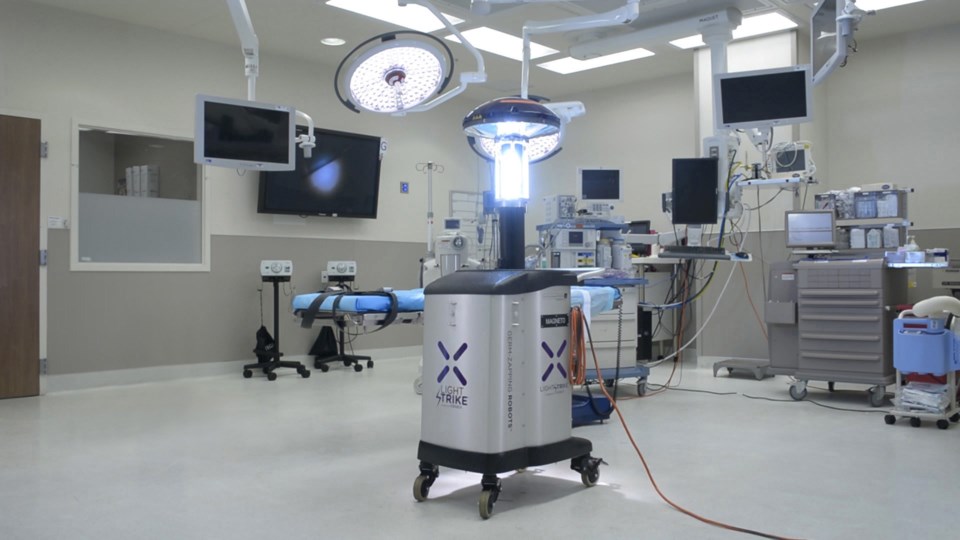A germ-zapping robot is being put to the test at Burnaby Hospital to combat deadly hospital-acquired infections.
Affectionately dubbed “the Germinator” by hospital staff, the new ultraviolet germicidal irradiation (UVGI) machine gives off pulses of UV light that kill stubborn microbes that linger on surfaces even after a traditional wipe-down with bleach or hydrogen peroxide.
The intense light kills so-called superbugs like C. (Clostridium) difficile, MRSA (methicillin-resistant Staphylococcus aureus) and vancomycin-resistant enterococci (VRE) by damaging their DNA and RNA.
Burnaby Hospital is one of three Fraser Health facilities (Ridge Meadows and Abbotsford regional hospitals are the other two) piloting the use of the robots, made by U.S. company Xenex.
The local hospital made headlines five years ago when a group of senior doctors reported there had been 84 C. difficile-related deaths there and 473 cases in just two-and-a-half years.
The physicians called the hospital’s response to the problem “ineffectual” and bad enough to be considered medical negligence.
Within two years the hospital had cleaned up its act, driving the rate well below the national target of 6.0 cases per 10,000 patient days, but C. difficile infections have again crept past that target several times in the past year and a half.
Between Aug. 12 and Sept. 8, the rate was 9.0.
Along with enhanced hands-on cleaning, Fraser Health is looking to the UV robot for help, according to Burnaby Hospital clinical operations director Coralei Still.
“We want to see zero rates,” she told the NOW, “so anything is of concern. When we’ve worked as hard as we had, any kind of increase – we get on top of it right away.”
An earlier trial at Surrey Memorial Hospital showed an 80 per cent reduction in bacteria in patient rooms after disinfection with the UV machine, according to Fraser Health.
The pilot at Burnaby, Ridge Meadows and Abbotsford began in November and the robots will be trialed in six high-volume in-patient units for six months.
“That’s where we have our largest risk because of more people coming in and out,” Still said.
Fraser Health is currently renting each machine at a cost of about $6,600 per month, but if the pilot is successful, the health authority will considering buying them at a price of just over $130,000 each, according to Still.
Patients are removed from rooms during a cleaning, which takes about 20 minutes for a small patient room and more for larger areas.
“We have to move it to make sure it hits every surface that we can get to in that room,” Still said.
While UV light doesn’t penetrate deeply into tissues, it can cause retina sensitivity and sunburn-like damage to skin, so disinfection units are operated by specially trained personnel and only in unoccupied rooms.
Since UV rays can’t get past doors, glass or plastic, there is no risk to people outside the room, according to Fraser Health.
To prevent accidental exposure, the machine is also equipped with motion sensors that will shut it down if it detects movement, and warning signs are posted outside the doors during a cleaning.



